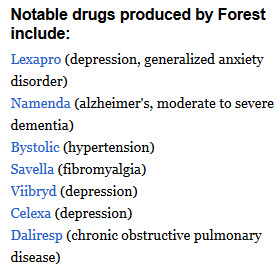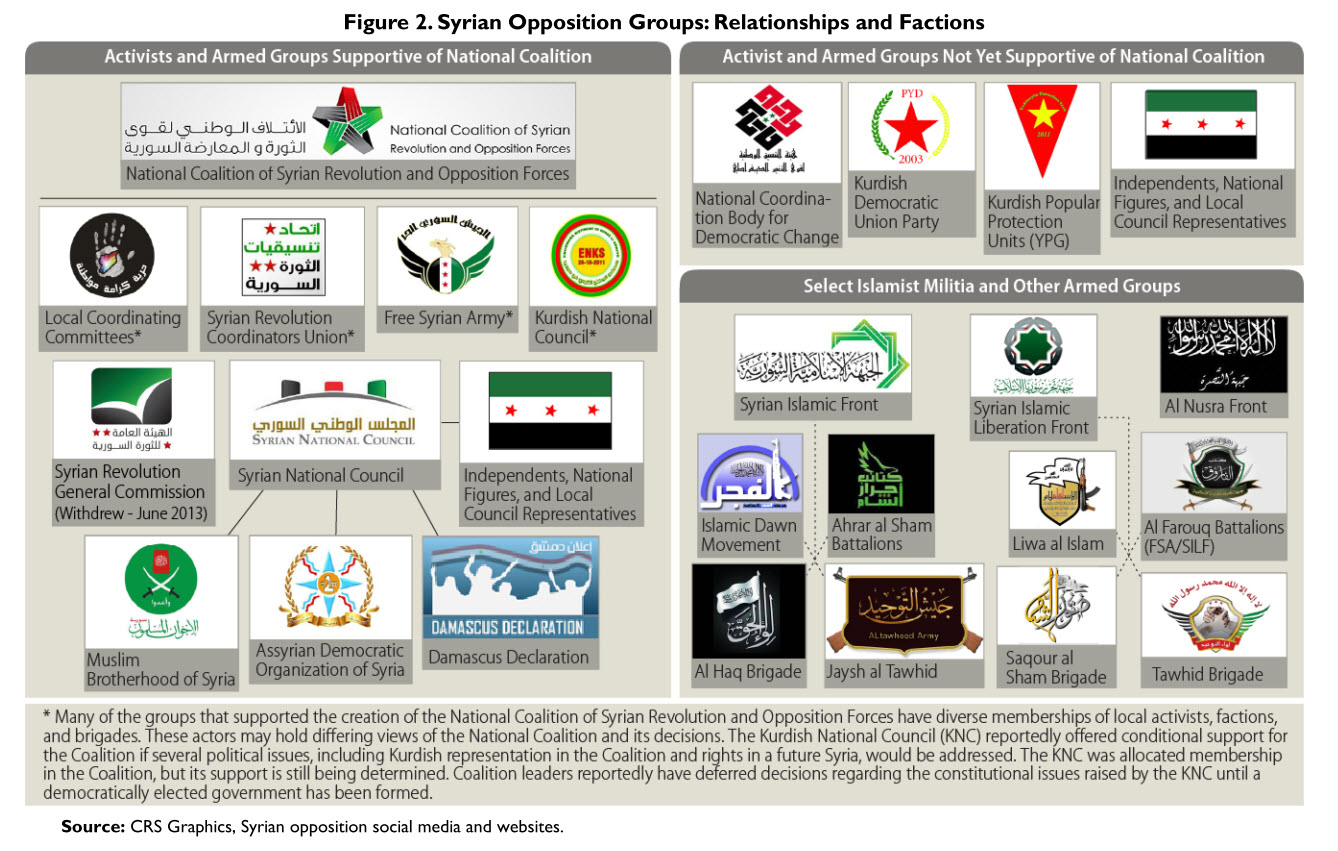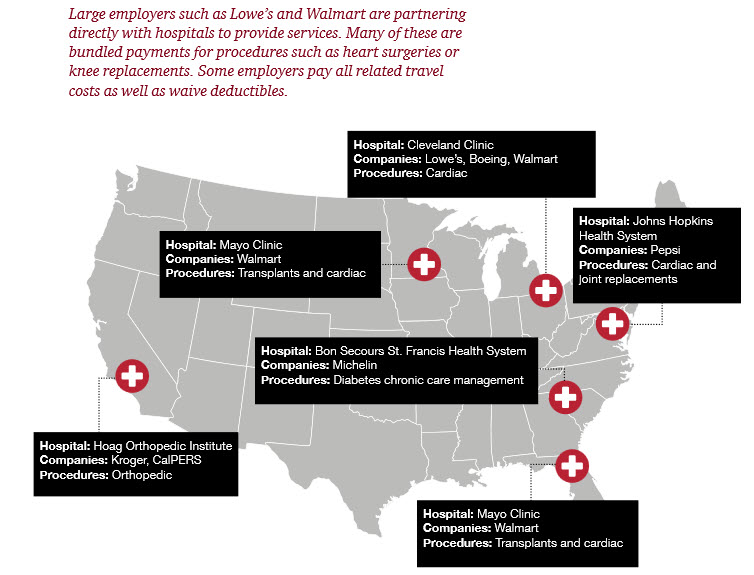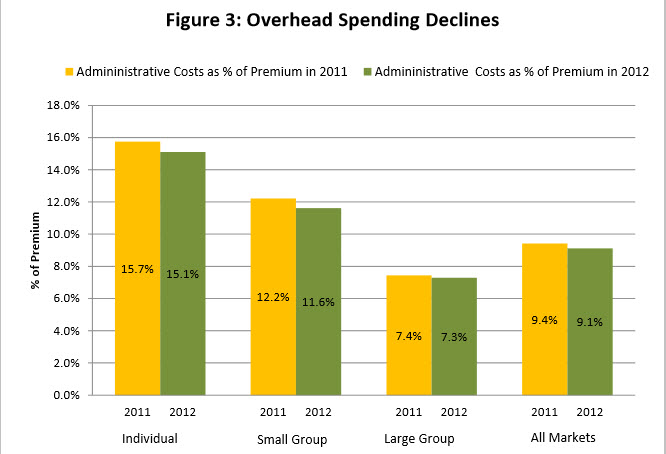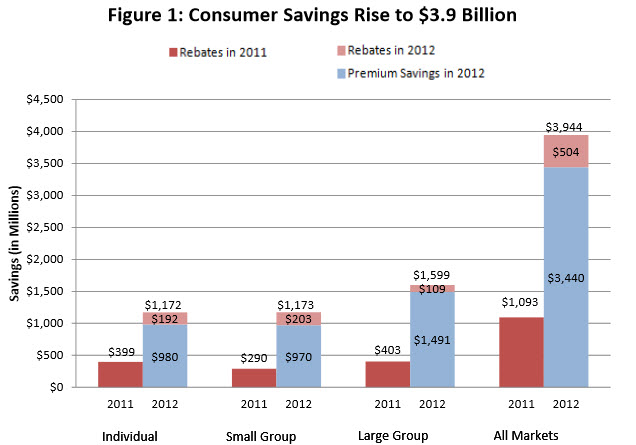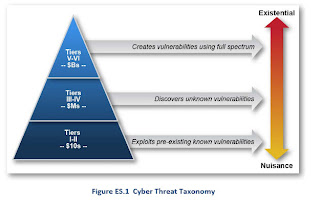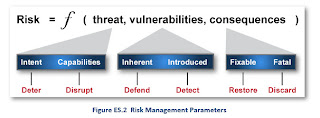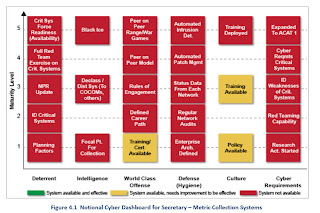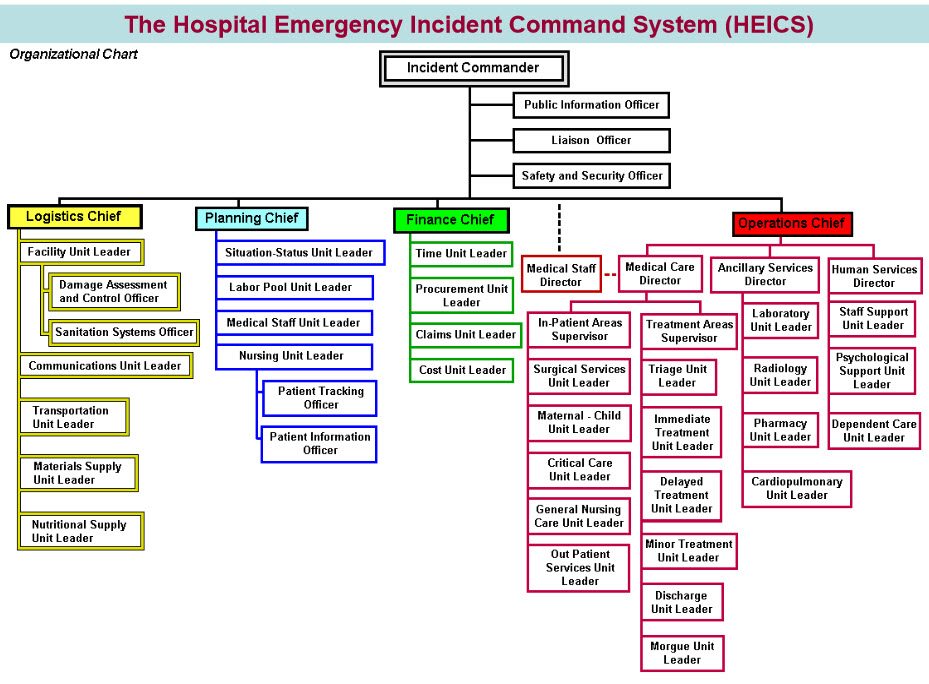Thursday, June 27, 2013
Wednesday, June 26, 2013
Raking it in...
ProPublica's recent report 'Top Medicare Prescribers Rake In Speaking Fees From Drugmakers' looked at pharma payments to physicians, honing in on Forest Laboratories and its blood pressure medicine Bystolic. The study marked "... the first time anyone has
matched payment data made public by drug companies with physician prescribing
records from the Medicare drug program, which covers about 1 out of every 4
prescriptions in the U.S..."
The article strongly implies that there is correlation, if not actual causation, between the speaking fees and other payments made, and the prescriptions written... It states "... Now, data obtained and analyzed by ProPublica suggest
another factor in Bystolic's rapid success: Many of the drug's top prescribers
have financial ties to Forest.
At least 17 of the top 20 Bystolic prescribers in Medicare's prescription drug program in 2010 have been paid by Forest to deliver
promotional talks. In 2012, they together received $283,450 for speeches and
more than $20,000 in meals.
Nearly all those doctors were again among the highest
prescribers in 2011, the most recent year for which Medicare data are
available..." This, along with the "rake in" of the title are clearly meant to convey this impression.
OK, so this blogger actually believes in the position that would seem to be the one held by Dr. Nissen of the Cleveland Clinic i.e. that physicians should take no money from pharmaceutical companies. However, the numbers reported here are pretty meaningless and show next to nothing - rather than a (presumably) damning "...17 of the top 20 Bystolic prescribers in Medicare's prescription drug program in 2012... received $283,450 for speeches and more than $20,000 in meals..." based on the numbers in the table that accompanied the article one could as easily say "...almost half of these prescriptions were written by eight prescribers, who received a grand total of $14,500 between them!" Rather less "sexy." There appears to be no correlation at all between the amounts of payments made and the number of prescriptions written.
Rather 'weak tea' here... Surely there are more robust numbers out there!
Note: If you click on one of the links, you see the information below regarding other Forest products. This could well explain the variance in pay among the prescribers listed... in theory the prescribers receiving higher fees while writing fewer Bystolic prescriptions could well also be among the top prescribers of a number of the other Forest products... The article lists 2012 speaking fees received from Forest, it does not say these were uniquely for speaking about Bystolic. Of course this would beg the question of why, if Dr. Reznik decided to "rake in" the money for prescribing Forest's Bystolic, why would he not do the same for their other products and thus "rake in" more than a measly $3,750? By focusing only on the Bystolic numbers and by presenting this uni-dimensional case, ProPublica has done the public a disservice. A 'lazy' article indeed.
Tuesday, June 25, 2013
Monday, June 24, 2013
Sunday, June 23, 2013
Making sense... (or trying to...)
Source: Wikimedia Commons
... of the multiple branches of Islam and how they relate to one another...
Click to enlarge:
Islam
Sunni Islam
Shia Islam
Kharajite
Ahmadiyya
Babism - Baha'i
Ismaili - Druze - Nizari - Mustaali
Twelver - Alevi - Alawite
Zaydi
Satpanth
Sulaimani Bohra
Alevi Bohra
Hafizi
Hebtiahs Bohra
Atba-i-Malak
Atba-i-Malak Badar
Atba-i_Malak Vakil
Note: no representations made about the correctness (or completeness) of this graphic, in fact there are bound to be errors given a) the complexity of the subject matter, and, b) that this blogger is no expert (nor claims to be)!
Random charts - healthcare costs
Source: Medical Cost Trend: Behind the Numbers 2014 26-page PDF report from PricewaterhouseCoopers. The bottom line? "... Medical cost trend measures spending growth in healthcare services and products—a key ingredient in setting the coming year’s insurance premiums. For 2014, PwC’s Health Research Institute (HRI) projects a medical cost trend of 6.5%..."
Saturday, June 22, 2013
MLR - year 2
80/20 Rule Delivers More Value to Consumers in 2012 just came out with MLR rebate information for 2012... Rebates to be paid by insurers decreased from the corresponding amounts paid in 2011 as insurers better calibrated their premiums to reduce the 'excess.'
Per the report: "... Consumers benefit from the 80/20 rule in two ways. First, they benefit upfront because insurance companies now keep premiums lower and operate more efficiently in order to meet the 80/20 rule. And second, if an insurance company doesn’t meet the 80/20 rule, then the consumer benefits by receiving a rebate for the amount that exceeds this threshold. In 2012, the 77.8 million consumers in the three markets covered by this 80/20 rule saved $3.4 billion upfront on their premiums because of the 80/20 rule and other Affordable Care Act programs. Additionally, consumers will save $500 million in rebates, with 8.5 million enrollees due to receive an average rebate of approximately $100 per family..."
In HHS: One ACA provision saved Americans $4B last year reports: "[CMS Deputy Administrator Gary] Cohen said "As [insurers have] adjusted their prices to the new rule, as they've become more efficient and more cost effective, two things happen: the number of rebates goes down and the corresponding amount of premium that people have to pay for the value they are getting for insurance comes down as well." Cohen also noted that other provisions of the ACA have contributed to lower premium rates by increasing competition among carriers and encouraging insurers to operate more efficiently..."
Hooray, so premiums are decreasing as stated at Putting Americans in Control of Their Health Care - "According to the independent and non-partisan Congressional Budget Office, people who get coverage through their employer today will likely see lower premiums. Reform will lower premiums by reducing administrative costs, increasing competition between insurance companies and creating a larger pool of insured Americans."! Well, perhaps or perhaps not:
Cost of the Future Newly Insured under the Affordable Care Act (ACA)
Schumer: Yeah, health insurance premiums are going up partially because of ObamaCare; Update: Er, that’s not what I meant…
Some previous blog entries referencing the MLR:
All you ever wanted to know about the MLR - Sep 23rd, 2012
Latest MLR update - Dec 4th, 2011
The MLR saga continues - May 13th, 2011
Misc update (MLR) - Mar 26th, 2011
Misc update - V - Feb 13th, 2011
Misc updates - MLR - Oct 25th, 2010
MLR Redux - Aug 24th, 2010
MLR update - Jun 27th, 2010
Health care re-form VIII (More nonsense) - August 28th, 2009
In HHS: One ACA provision saved Americans $4B last year reports: "[CMS Deputy Administrator Gary] Cohen said "As [insurers have] adjusted their prices to the new rule, as they've become more efficient and more cost effective, two things happen: the number of rebates goes down and the corresponding amount of premium that people have to pay for the value they are getting for insurance comes down as well." Cohen also noted that other provisions of the ACA have contributed to lower premium rates by increasing competition among carriers and encouraging insurers to operate more efficiently..."
Hooray, so premiums are decreasing as stated at Putting Americans in Control of Their Health Care - "According to the independent and non-partisan Congressional Budget Office, people who get coverage through their employer today will likely see lower premiums. Reform will lower premiums by reducing administrative costs, increasing competition between insurance companies and creating a larger pool of insured Americans."! Well, perhaps or perhaps not:
Cost of the Future Newly Insured under the Affordable Care Act (ACA)
Schumer: Yeah, health insurance premiums are going up partially because of ObamaCare; Update: Er, that’s not what I meant…
Some previous blog entries referencing the MLR:
All you ever wanted to know about the MLR - Sep 23rd, 2012
Latest MLR update - Dec 4th, 2011
The MLR saga continues - May 13th, 2011
Misc update (MLR) - Mar 26th, 2011
Misc update - V - Feb 13th, 2011
Misc updates - MLR - Oct 25th, 2010
MLR Redux - Aug 24th, 2010
MLR update - Jun 27th, 2010
Health care re-form VIII (More nonsense) - August 28th, 2009
Random picture - monsoon staple
Click to enlarge:
Source: The Big Picture: The Start of the Monsoon Season And one of its staples...
Sunday, June 16, 2013
What a shock!
Someone discovers that the pernicious blight on Indian society, caste, is still present even if somewhat 'out of fashion' to acknowledge- see Caste Is Not Past.
Some previous blog entries related to caste:
Caste update - May 15th, 2011
Misc update (caste) - Mar 26th, 2011Misc update (caste) - Jan 20th, 2011
Education emancipates? - Jun 26th, 2010
Misc update (caste) - Aug 29, 2009
Updates - #3 - Aug 25th, 2008
Frame of Reference - June 27th 2008
Caste - May 26th 2008
Random maps - original names
Click to enlarge:
Source: The Atlas of True Names. "... reveals the etymological roots, or original meanings, of the familiar terms on today's maps of the World, Europe, the British Isles and the United States." Cool!
Saturday, June 15, 2013
Deliberate conflation?
This blogger recently ran across an opinion piece, 'Drug compounding should be automated' that makes the case that technology (specifically drug compounding automation) that can reduce errors is readily available and should be implemented in hospital pharmacies as "... an investment in a higher standard of patient care."
The opinion piece starts off by referencing the recent spate of contaminated compounded drugs, including the recent multi-state outbreak of fungal meningitis associated with compounded injectable steroids. Having set the stage, the piece then reports a recent estimate of the annual economic costs of medication errors involving injectable drugs - "... In December, the journal American Health & Drug Benefits reported
that medication errors from injectable drugs harm more than 1 million
patients annually in U.S. hospitals. Adverse drug events due to
injectable medications cost U.S. health care payers between $2.7 billion
to $5.1 billion annually, an average of $600,000 per hospital." It then seamlessly goes on to state that "... the technology to prevent it is already available" i.e. automated compounding systems, and ends with the suggestion that as legislation to regulate pharmacy compounding is considered in an effort to enhance pharmacy safety "... Congress and the FDA must seize this opportunity to put medical
technology to its highest and best use, not just improving the quality
of patients’ lives, but saving them."
Well, if adverse drug events due to injectable medications cost U.S. health care
payers an average of
$600,000 per hospital annually and can be easily prevented by the adoption of an automated compounding system, then why on earth would this not be the way to go? Including even, perhaps, insisting that your legislator include compounding automation requirements in legislation! You could be forgiven if this is your 'takeaway' on reading this article!
Unfortunately it is not quite that simple - the article artfully juxtaposes several different issues and then skips seamlessly from one to another... As a result the casual reader is rather likely to have a mistaken understanding of the situation (i.e.they are very likely to infer the above). While the individual parts are all true, this blogger finds the way they are put together misleading at best, and dishonest at worst.
Let's parse it out a little.
First there are the different types of compounding. This can include every drawn up syringe (making patient-specific injectable, oral, etc. doses); drugs, electrolytes, etc. added to a stock IV bag; parenteral nutrition preparations; etc., etc. Per this source, just one hospital system, "... the Cleveland Clinic Health System, a network of 10 hospitals and 15 pharmacies, reported that in 2012, approximately 870,000 doses were compounded at its central facility..." The CRS report qualifies these as "traditional compounding."
Compounding can also include the items that have been recently in the news, quite different from the first group. Again, per the CRS: "... Some have suggested that certain activities not traditionally associated with compounding be considered compounding. Such activities include the large-scale production of drugs to ease certain drug shortages, to meet outsourcing needs of hospitals, and to supply physician-administered drugs. Non-traditional compounding may include (1) the production and shipping of large volume of drugs across state lines; (2) production of drugs that are copies of FDA-approved commercially available drugs; (3) production of drugs outside of a personal relationship with a patient and without a prescription for an individual patient to receive a compounded version; and (4) providing products to third parties, such as hospitals, clinics, physician offices, and home health providers. These activities may be considered more akin to manufacturing than traditional compounding, which is considered part of the traditional practice of pharmacy. In this report, references to these types of activities will be called “non-traditional compounding.” The opinion piece starts off with the recent sterility issues in this 'non-traditional compounding' area, then later jumps to compounding 'writ large' without making any distinction between the two.
Up next. Yes, the economic burden due to adverse events related to injectable drugs is very significant, not to speak of the human costs. However, the numbers cited are for all adverse drug errors related to injectable drugs, i.e. those that occur during all the phases of the medication process - prescribing/ordering (e.g. incorrect drug selection based on indications, contraindications, known allergies, existing drug therapy, etc.; dose, dosing form, route, concentration, rate of administration, etc.); transcription; compounding; dispensing (e.g. wrong medication, wrong dose or strength, wrong formulation, expired medication, etc.); and finally administration.Now it's hard to get exact numbers, but one study (Analysis of Adverse Drug Events, JAMA, 1995; 274, 35-43) showed that "Approximately 39% of medication errors occur during the ordering process; 12% occur during the order verification process; 11% occur during the preparation and dispensing process; and 38% occur at administration." So, at best "the technology to prevent" a nebulous "it" corresponds to a portion of 11% of the numbers quoted.
Add it all up, and this blogger finds this opinion piece rather misleading, even ignoring the egregious and cynical use of the victims of the recent meningitis tragedy -"... as the residents of Tennessee might rightly ask, how much is too much to spend to prevent another outbreak linked to contaminated medicine?"
First there are the different types of compounding. This can include every drawn up syringe (making patient-specific injectable, oral, etc. doses); drugs, electrolytes, etc. added to a stock IV bag; parenteral nutrition preparations; etc., etc. Per this source, just one hospital system, "... the Cleveland Clinic Health System, a network of 10 hospitals and 15 pharmacies, reported that in 2012, approximately 870,000 doses were compounded at its central facility..." The CRS report qualifies these as "traditional compounding."
Compounding can also include the items that have been recently in the news, quite different from the first group. Again, per the CRS: "... Some have suggested that certain activities not traditionally associated with compounding be considered compounding. Such activities include the large-scale production of drugs to ease certain drug shortages, to meet outsourcing needs of hospitals, and to supply physician-administered drugs. Non-traditional compounding may include (1) the production and shipping of large volume of drugs across state lines; (2) production of drugs that are copies of FDA-approved commercially available drugs; (3) production of drugs outside of a personal relationship with a patient and without a prescription for an individual patient to receive a compounded version; and (4) providing products to third parties, such as hospitals, clinics, physician offices, and home health providers. These activities may be considered more akin to manufacturing than traditional compounding, which is considered part of the traditional practice of pharmacy. In this report, references to these types of activities will be called “non-traditional compounding.” The opinion piece starts off with the recent sterility issues in this 'non-traditional compounding' area, then later jumps to compounding 'writ large' without making any distinction between the two.
Up next. Yes, the economic burden due to adverse events related to injectable drugs is very significant, not to speak of the human costs. However, the numbers cited are for all adverse drug errors related to injectable drugs, i.e. those that occur during all the phases of the medication process - prescribing/ordering (e.g. incorrect drug selection based on indications, contraindications, known allergies, existing drug therapy, etc.; dose, dosing form, route, concentration, rate of administration, etc.); transcription; compounding; dispensing (e.g. wrong medication, wrong dose or strength, wrong formulation, expired medication, etc.); and finally administration.Now it's hard to get exact numbers, but one study (Analysis of Adverse Drug Events, JAMA, 1995; 274, 35-43) showed that "Approximately 39% of medication errors occur during the ordering process; 12% occur during the order verification process; 11% occur during the preparation and dispensing process; and 38% occur at administration." So, at best "the technology to prevent" a nebulous "it" corresponds to a portion of 11% of the numbers quoted.
Add it all up, and this blogger finds this opinion piece rather misleading, even ignoring the egregious and cynical use of the victims of the recent meningitis tragedy -"... as the residents of Tennessee might rightly ask, how much is too much to spend to prevent another outbreak linked to contaminated medicine?"
Now, this blogger does not deny that automation has a place. However its use needs to be justified by improved patient safety (using 'real', validated outcomes and numbers); by the potential reductions in pharmacy drug waste; by making doses more 'just-in-time'(additional waste reduction opportunity); etc. and not by such as this opinion piece. Coming, incidentally, from the CEO of a company that makes an automated compounding system (apparently at a price tag of "$1.35 million, plus an annual maintenance fee of $130,000")
Some links on pharmacy compounding:
Compounded drugs - (35-page CRS PDF)
Pharmacy Sterile Compounding Summit
Thursday, June 13, 2013
Random picture - Liu Bolin
Click to enlarge:
Source: The Big Picture: Walls Video of this shoot here - How does Liu Bolin Make Himself Invisible?
Random picture - Everest
Source: Maxed out on Everest "Headlamps trace a path to the summit a few hours before dawn..." Read the accompanying article - How to fix the mess at the top of the world
Monday, June 10, 2013
Great quotes
"To my knowledge, we have not had any citizen who has registered a complaint relative to the gathering of this information"
- Senator Saxby Chambliss (R-GA), senior Republican on the Senate Intelligence Committee, speaking of the previously secret NSA gathering of phone metadata.... the stupidity is self-evident...
Sunday, June 9, 2013
The right lesson?
Following the Boston marathon bombings many articles have been written about the swift medical response that occurred and the extraordinary efforts that saved lives. Reading 'Why Boston's Hospitals Were Ready' by Dr. Atul Gawande, this blogger was struck by one aspect of the story:
Per Dr. Gawande "... There’s a way such events are supposed to work. Each hospital has an
incident commander who coordinates the clearing of emergency bays and
hospital beds to open capacity, the mobilization of clinical staff and
medical equipment for treatment, and communication with the city’s
emergency command center... no sooner had he set up his command post and begun making phone calls
then the first wave of victims arrived. Everything happened too fast
for any ritualized plan to accommodate.
So what did you do, I asked him.
“I mostly let people do their jobs,” he said. He never needed to call
anyone. Around a hundred nurses, doctors, X-ray staff, transport staff,
you name it showed up as soon as they heard the news. They wanted to
help, and they knew how. As one colleague put it, they did on a large
scale what they knew how to do on a small scale. They broke up into
teams of six or so people, one trauma team for each patient. A senior
nurse and physician stood at the door to the ambulance bay triaging the
patients going to the teams. The operating-room director handled triage
to, and communication with, the operating rooms. Another staff member
saw the need for a traffic cop and began shooing extra clinicians into
the waiting room, where they could stand by to be called upon....
... at Beth Israel Deaconess Medical Center... much the same experience there... “But everybody spontaneously knew the dance moves,” he said. He didn’t have to tell people much of what to do at all..."
OK, so one really can't complain about success and things were done extraordinarily well resulting in the optimum outcome... as is very often the case in healthcare. From Katrina to Sandy, and many incidents before, in-between and after, extraordinary efforts by ordinary (and extraordinary) people have often 'saved the day.' However, it is a realization that this has usually been the case (i.e. a reliance on extraordinary efforts plus often a good measure of luck) rather than planning, processes, and systems that has led to the adoption of systems and processes to respond to emergencies.
The Hospital Emergency Incident Command System is the standardized approach designed to help hospitals prepare for and respond to various types of disasters. Clearly this mass-casualty event was precisely the kind of emergency the system was put in place to deal with! Yet we read that these systems were never used, and that everyone immediately reverted to the 'every one pitch in and do what needs to be done' response that has long been typical of the response in health care! Indeed Dr. Gawande appears to dismiss the HEICS as a "ritualized plan" apparently much too slow to be of much use.
Thus although the medical response was a success, clearly the emergency response systems of the various Boston hospitals were found to be wanting... Some work is clearly needed there to ensure that they are more responsive and will work in any future emergencies. Although things ended up working out extraordinarily well on this occasion, they may not the next...
Dr. Gawande ends his article with: "... We’ve learned, and we’ve absorbed. This is not cause for either
celebration or satisfaction. That we have come to this state of
existence is a great sadness. But it is our great fortune. Last year, after the Aurora shooting, Ron Walls, the chief of emergency
medicine at my hospital, gave a lecture titled “Are We Ready?” In Boston, it turns out we all were."
Is this the right lesson to take from what happened? This blogger is not so sanguine.
Some other articles related to hospital response:
Note;It must be observed that the health care folks handled this much better than did the telecommunications sector.
Saturday, June 8, 2013
Random picture - teardown manual
Source: "Things Come Apart" reveals the inner workings of everyday consumer tech. Book featuring "... images of the inner workings of 50 everyday items from bicycles and chainsaws to modern day computers and phones, with each component painstakingly laid out with geometric precision..." Above, a disassembled Swiss army knife.
Thursday, June 6, 2013
Great quote
“The military community is different from the rest of the nation. These stores are manned by people who are
familiar with their situation, who appreciate what they’re doing for our
country.”
- Patrick B. Nixon, president of The American Logistics Association (a Washington-based trade group representing 250 firms that sell goods on base stores), on why commissaries should stay and military personnel should not be forced to shop for groceries in civilian stores (even if prices similarly discounted). See Plan to shut military supermarkets shows difficulty of cutting defense spending
Wednesday, June 5, 2013
Tuesday, June 4, 2013
Monday, June 3, 2013
Sunday, June 2, 2013
Random picture - AI watch?
The Smile, a project on Indiegogo...From the project: "... The Smile is the world’s first
smart phone you can wear like a bracelet! Not only that, but it can also
read your mood. It will know if you’re stressed out or relaxing. It can
monitor your diet and your health. It will inform you when you should
get up and move or take a rest. It can suggest where you should spend a
night out on the town. It can control how awake you are as well as your
sleep stages and your dream time. And if you’re in trouble, the Smile
will call for help.
The Smile will automatically switch its display from a
daylight optimized type to a night time optimized one. While you’re
sleeping it won't let pesky telemarketers interrupt your sleep. . It
will hold incoming calls, route them to voice mail or inform the caller
to call back later. And unlike other smartphones, the smile doesn't need
you to tell it how to reply to text messages. Your Facebook friends
won't have any excuses for calling you while you sleep, because The
Smile will set your status to 'sleeping' when you go to bed.
The Smile is the AI that will become your indispensable assistant friend...'
Wonder how real this is... October or December 2013 will tell!
Misc update - climate change
A new study Cosmic-Ray-Driven Reaction and Greenhouse Effect of Halogenated Molecules: Culprits for Atmospheric Ozone Depletion and Global Climate Change by a researcher at The University of Waterloo,Canada apparently demonstrates an "... almost perfect correlation between rising global surface temperatures and CFCs in the atmosphere..."; the study concludes that recent global warming has been caused by CFCs and not CO2; and apparently its model "... has superior predictive capabilities, compared with the conventional sunlight-driven ozone-depleting and CO2-warming models"
From the paper:
"For global climate change, in-depth analyses of the observed
data clearly show that the solar effect and human-made halogenated gases
played the dominant role in Earth's climate change prior to and after
1970, respectively. Remarkably, a statistical analysis gives a nearly
zero correlation coefficient (R = -0.05) between corrected global
surface temperature data by removing the solar effect and CO2
concentration during 1850–1970. In striking contrast, a nearly perfect
linear correlation with coefficients as high as 0.96–0.97 is found
between corrected or uncorrected global surface temperature and total
amount of stratospheric halogenated gases during 1970–2012. Furthermore,
a new theoretical calculation on the greenhouse effect of halogenated
gases shows that they (mainly CFCs) could alone result in the global
surface temperature rise of ~0.6°C in 1970–2002. These results provide
solid evidence that recent global warming was indeed caused by the
greenhouse effect of anthropogenic halogenated gases. Thus, a slow
reversal of global temperature to the 1950 value is predicted for coming
5~7 decades. It is also expected that the global sea level will
continue to rise in coming 1~2 decades until the effect of the global
temperature recovery dominates over that of the polar O3
hole recovery; after that, both will drop concurrently. All the
observed, analytical and theoretical results presented lead to a
convincing conclusion that both the CRE mechanism and the CFC-warming
mechanism not only provide new fundamental understandings of the O3 hole and global climate change but have superior predictive capabilities, compared with the conventional models..."
So what is a layperson to make of this study? Believe it, which means believing that global warming is/was anthropogenic but that perhaps we are not in as bad a shape as the CO2-centric approach would posit (i.e. this study indicates global temperatures will now go down rather than up as per the CO2-centric predictions...) and risk being castigated as a "denier"? Discard it? Believe it, but argue that it represents just one factor, but still go with the "AGW is correct, is caused by carbon dioxide and global temperatures will continue to rise" outlook? Previous blog entries (links below) have wrestled with the issue of understanding the issue, this is another data point that would seem to go against the "consensus."
Previous blog entries related to climate:
Random charts - deforestation - Jan 8th, 2012
Misc update (climate) - Jan 29th, 2011
Climate denial - Jun 5th, 2010
More on climate - Jan 31st, 2010
Climate change and doubt - Jan 24th, 2010
Meet Dr. Rajendra Pachuri - Jan 23rd, 2010
We wuz wrong - Jan 23rd, 2010
Saving the day... - Dec 20th, 2009
Skimmed milk masquerades as cream - Dec 17, 2009
Saturday, June 1, 2013
Misc update - Georgia
The Russia: Other Points of View blog had a recent entry on... Georgia. 'Georgian Reflections' has a nice overview of the history/situation (with many links).
Some previous blog entries on Georgia:
Misc update (Georgia) - May 18th, 2012
Misc update (Georgia) - Dec 28th, 2011
Misc update (Georgia) - May 15th, 2011
Misc update (Georgia) - Mar 26th, 2011
A little war II - Apr 22nd, 2010
A little war I - Mar 17th, 2010
An inconvenient truth - Nov 26th, 2008
Georgia update... - Nov 22nd, 2008
Georgia - Sept 7th, 2008
Immediate Response?!? - Aug 25th, 2008
Georgia (updated) - Aug 15th, 2008
Two-edged sword (South Ossetia) - Aug 11th, 2008
Consequences (MDET)
A recent article by Curtis Rooney, president of the Healthcare Supply Chain Association, took to task medical device manufacturers that have chosen to pass along the 2.3% Medical Device Excise Tax to their healthcare customers - Some medical device manufacturers not paying their share of health reform:
"As debate over repeal of the medical device excise tax continues on Capitol Hill, evidence has begun to emerge that some medical device manufacturers have chosen to pass the costs of the tax directly to American hospitals and healthcare providers, and ultimately to patients and taxpayers. For hospitals already delivering effective and affordable care on shrinking budgets, this is tantamount to being double-billed for healthcare reform....
... Hospitals are now reporting that, although some suppliers are behaving responsibly, other device manufacturers are billing hospitals directly to cover the costs associated with the medical device excise tax. Although there are more than 40 taxes found in the ACA, hospitals and other healthcare providers report that medical device suppliers are the only parties indicating that they plan to pass the tax on to their customers. That is not right.."
An example of a manufacturer from the second group (anonymized to protect the innocent):

Click to enlarge
Here's an example from a manufacturer that would appear to fall into the third group (also anonymized). This one is so elaborate that it is difficult to attribute this to confusion or even willful ignorance, but would seem to be an attempt at active dishonesty. The letter references part of the legislation and corresponding IRS regulations, but for things that do not pertain to the hospital doing the purchasing! The hospital is directed to complete a "medical device exemption certificate." Clearly the first three choices would not apply to a hospital almost 100% of the time (i.e. use for further manufacture, for resale, or for export) leaving "None of the above: Purchased item(s) subject to the 2.3% medical device excise tax" which would imply the purchaser is responsible. The only problem? This logic is applicable to the manufacturer and not to the purchaser!

Click to enlarge

The medical device manufacturers are behaving responsibly for the most part. They, and their trade association, are actively trying to get this provision of the Affordable Care Act reversed. Majorities in both the Senate and House have indicated that they are in favor of a repeal, however specific enabling legislation has not been passed so the MDET remains in effect.
OK, so this blogger has no problem with these efforts by the device manufacturers, where he takes exception is with the legislators... Of course, this was not unexpected!
The September 29th, 2008 blog entry 'Quick reminder...' bemoaned Congress' penchant for specializing in ignorance, error, and immediate interest; in evincing a cavalier disregard of the intricacies of the matters they consider; and for 'specializing' in producing unintended consequences!
OK, so this blogger has no problem with these efforts by the device manufacturers, where he takes exception is with the legislators... Of course, this was not unexpected!
The September 29th, 2008 blog entry 'Quick reminder...' bemoaned Congress' penchant for specializing in ignorance, error, and immediate interest; in evincing a cavalier disregard of the intricacies of the matters they consider; and for 'specializing' in producing unintended consequences!
The follow-up September 29th, 2009 entry 'Unintended consequences' reprised this theme, provided a couple of examples, then said: "... Here's an easy prediction that's guaranteed to come about: one or two years after health care reform (or, rather, health insurance reform) gets passed, our Senators and Representatives will be complaining about some aspect of the delivery system and demanding corrective legislation,
and that the issue(s) they are complaining about will be a direct (but
unintended) consequence of the earlier reform... Another easy
prediction: when this happens they will eschew all ownership and
responsibility for the issue, and will seek to lay the blame
elsewhere..."
Amen!
Subscribe to:
Posts (Atom)



